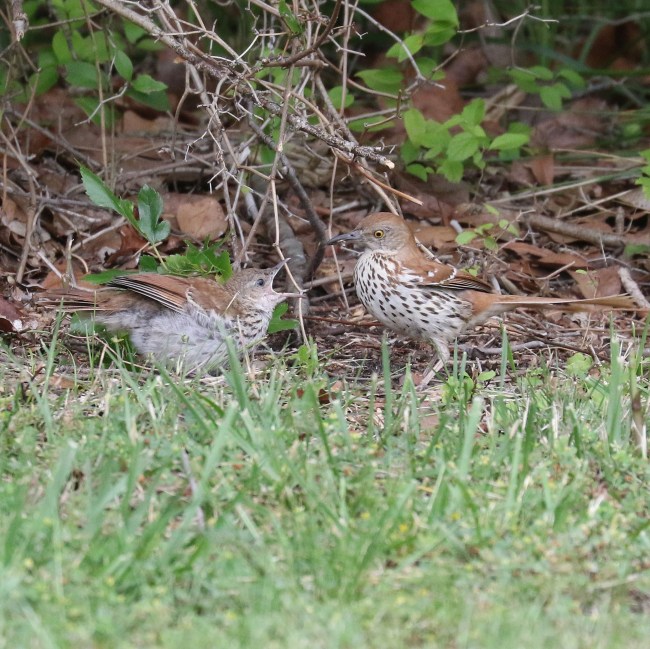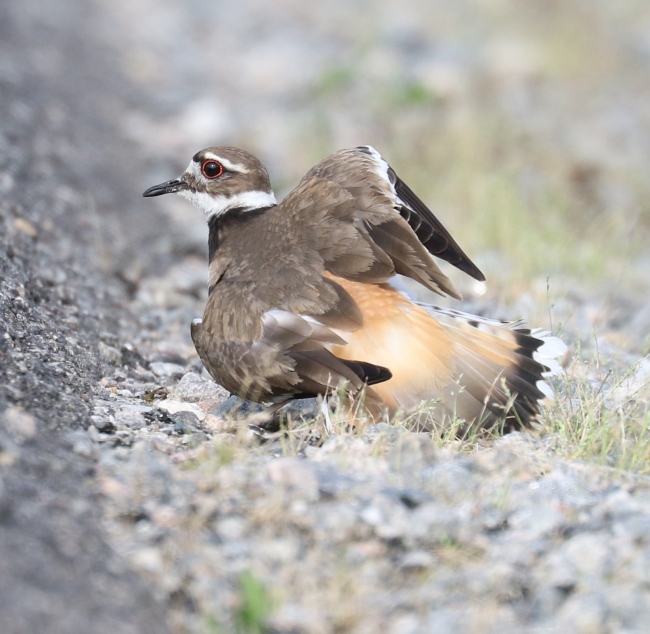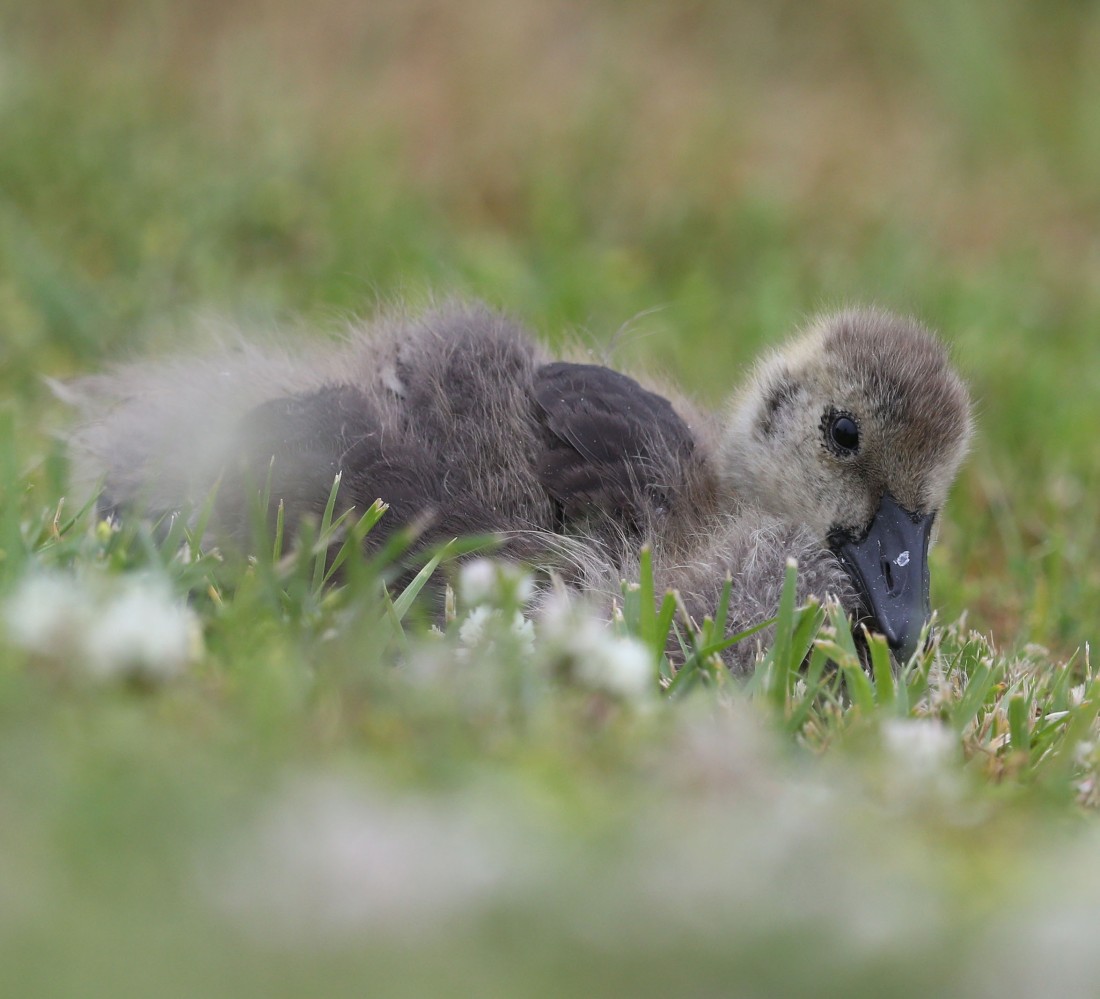This is a few days late, I know. Memorial Day 2020 has passed. But a time to be grateful never does. We remember those who fought and died for our country. We also recognize that the best way to thank them is to live lives worthy of their sacrifice. I’m reminded of Thomas Aquinas’s words—and words I reflect on often: “Man is debtor chiefly to his parents and his country, after God.” Debt to country, especially, seems a quaint notion today.
The Spring Soundscape
Here is something that is never passé and that is always a feature of the Eastern U.S. spring soundscape—the song of the Brown Thrasher. Males, the ones who sing, usually do so from a high perch, (while photographers, the ones who record, usually do so with a super telephoto).

According to Nathan Pieplow, author of the Peterson Field Guide to Bird Sounds of Eastern North America, Brown Thrashers have been found to sing over 1000 different song phrases, at least half of which are repeated. That’s quite a repertoire—or to put it another way, that’s quite a playlist. Listen for the paired phrases, the regular pauses, the musical quality.
If you’re interested, compare the Brown Thrasher’s song with the song of the Northern Mockingbird. Many find them confusing, and it’s understandable why. If you can imagine a bird song “regularity spectrum,” the thrasher’s song would be closer to the “regular” end, while the mocker’s song would be a little nearer the “sporadic” end.
The Spring Landscape
Here’s a feature, not of the spring soundscape but of its landscape. This is an adult Brown Thrasher feeding its young. Had I not been capturing images at 10 frames per second, I probably would have missed this moment.

Here are parent and offspring only moments before. Note the posture of the fledgling, its fluttering wings, and the obvious differences between the two birds. Notice those same differences in the two photos that follow.

Parental Care
I mentioned in “Life and Beauty” that parental care continues even after many birds leave the nest. The images above are Exhibit A. The next three images below are Exhibits B, C, and D.



Bird Love
Here’s one of the four goslings that the Canada Goose was brooding. Though Canada Goose young are precocial and leave the nest quickly, they still need some help regulating their body temperatures. That little, wet appendage on the left is a wing. Both wings will be useless for flight for two months.

And here’s an older gosling (different brood) with its second coat of down. You’ll also note that some of its pennaceous feathers are starting to appear. This little guy/gal may no longer need brooding, but it’s still heavily dependent and follows its parents.

That birds care for and protect their young is one of the many reasons they captivate us. They captivate us, too, with their sometimes spellbinding beauty and songs.

A reviewer of Anne Marie Wells’ bilingual children’s book, Mommy, Why Am I a Bird, characterized the relationship this way. “Birds attract us for their elegance, colours, songs, behaviors and carry with them the image and dream of freedom.” And that attraction is the thing that impels us both to watch them and to conserve and protect them.
Quip, Question, Quote
I know that migration is pretty much over, and as some have said, things are “winding down.” But I couldn’t resist adding this. And it ties in nicely with what I said about conservation and protection. This is an excerpt of an NPR interview with Jonathan Rosen about his book, The Life of the Skies: Birding at the End of Nature. Jonathan hails from New York City.
The birds I see passing through in spring time, they spend the winter in Central America or South America and they’re on their way north to Canada perhaps. And so one of the great things about birding is that your mind expands outwardly into this wide web whether you travel or not. But it also forces you to realize there is no such thing as a single forest.
I may see birds in the equivalent of my backyard but actually if I don’t think about how to preserve the forests where they spend the winter or the places where they go to breed then those birds won’t be there.
BEAUTIFUL photos!
LikeLike
And all taken at Chesapeake city parks. Thanks, Laura!
LikeLike
Fantastic photos and commentary!
LikeLike
Bob, Thanks so much!
LikeLike
Thanks for all the hardwork & fantastic photos. Enjoy all the photos of the babies with their parents & how they nurture them. So many reasons to help protect our environment for their future & ours. Great writing!
LikeLike
Thank you, and so glad you enjoyed the post.
LikeLike
Love your blog ✨🙌🏻
LikeLiked by 1 person
Thanks so much!
LikeLiked by 1 person
My pleasure, followed you 💛
LikeLike